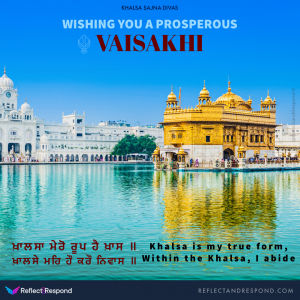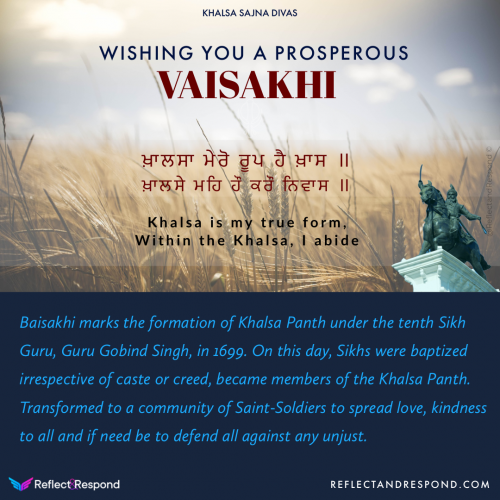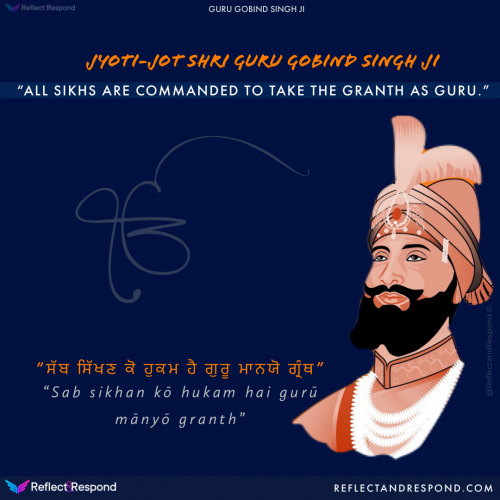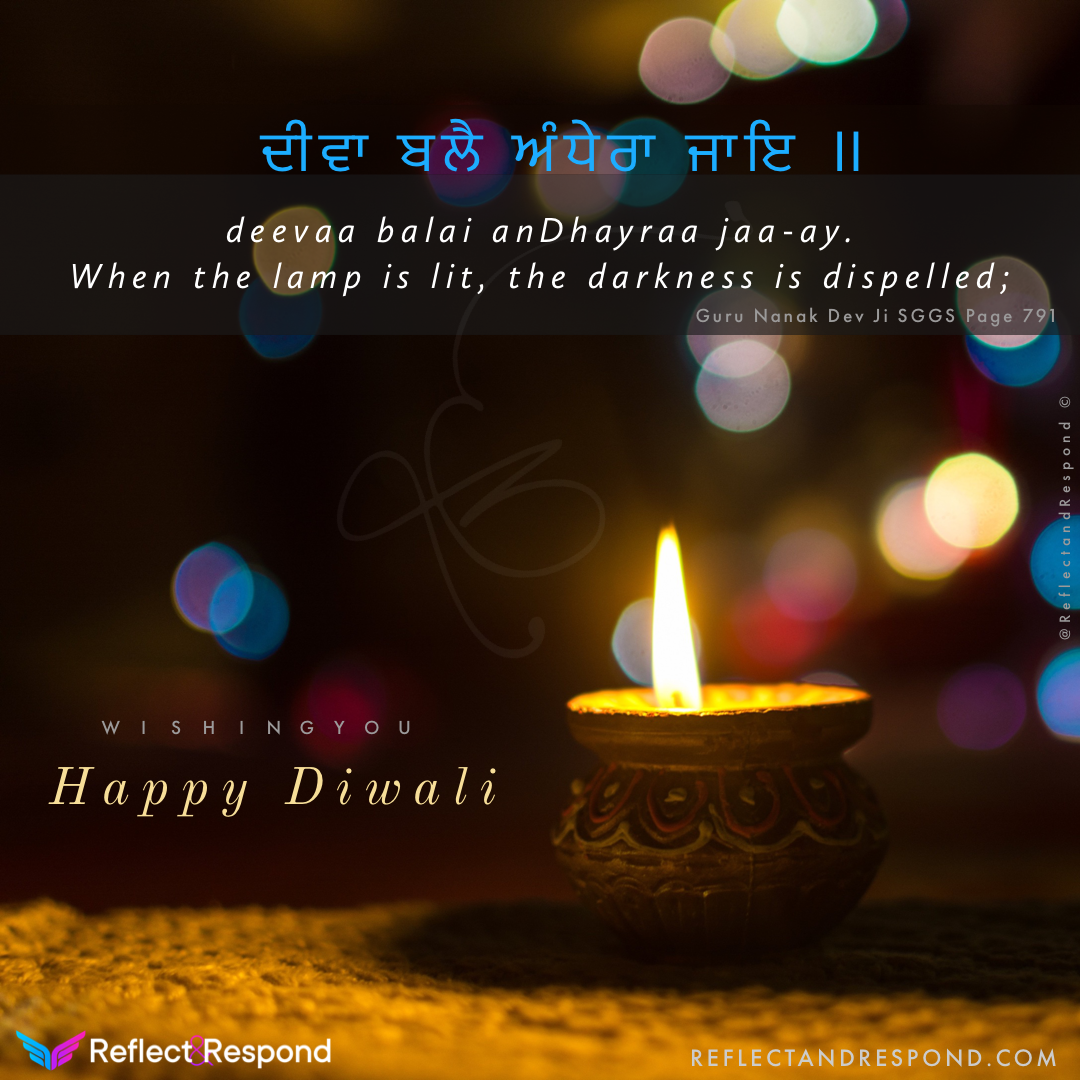“Happy Vaisakhi”
Vaisakhi also pronounced as Baisakhi started as a harvest festival in the Punjabi region of northern India.
It also celebrates the creation of the Khalsa order. It promotes justice and equality and the creation of a more equal and just society.
Vaisakhi the harvest festival
Vaisakhi / Baisakhi celebrations are filled with colors and vibrancy in the villages of Punjab and Haryana. The high point of Vaisakhi celebrations is the performance of the traditional ‘Bhangra’ and ‘Gidda’ dance by men and women respectively.
On Vaisakhi, Gurdwaras hold kirtans, Sikhs visit and bath in rivers or lakes before visiting religious shrines. Community fairs and nagar kirtan processions also mark the holy festival.
Vaisakhi / Baisakhi is observed by Hindus and Sikhs and also marks the beginning of Hindu solar New year. Vaisakhi marks the first day of the month of Vaisakha, is usually celebrated on 13 or 14 April every year and is a historical and religious festival in Sikhism.
This holiday is also known as Vaisakha Sankranti and celebrates the Solar new year, based on the Hindu Vikram Samvat calendar. It is additionally a spring harvest festival for many Indians. In other parts of India, the Vaisakhi festival is known by various regional names.
Why Vaisakhi is Celebrated
For Sikhs, Vaisakhi observes major events in the history of Sikhism and the Indian subcontinent that happened in the Punjab region. The significance of Vaisakhi as a major Sikh festival marking the birth of Sikh order.
History of Vaisakhi
Vaisakhi is also a historical and religious festival in Sikhism.
Vaisakhi an important festival as the day marks the new spring year and also the formation of Khalsa Panth under the tenth Sikh Guru, Guru Gobind Singh, in 1699.
On this memorable Baisakhi day (March,30 of A.D.1699) , Guru Gobind Singh Sahib called a big meeting at Kesgarh Sahib near the City of Anandpur Sahib. Between fifty to eighty thousand Sikhs attended this meeting.
When all were expecting to hear words of comfort and consolation from the lips of their Guru, they were perturbed to see him with a drawn sword in his hand and cried ‘ Is there anyone here who would lay down his life for Dharam?’
There was a big silence, but the Guru went on repeating his demand. At the third call Daya Ram, a Khatri of Lahore, rose from his seat and offered himself. The Guru took him into an adjoining enclosure(and soon after) came out with the (blood) dripping(sword in hand) and flourishing it before the gathering, asked again, ‘Is there any other Sikh here who will offer himself as a sacrifice(for the cause of dharma)?
At this Daram Das, a Jat of Delhi (Haryana side) came forward and was taken into the enclosure(The Guru again came out with the blood-stained sword, and made his previous demand).
In the same way three other men stood up, one after another, and offered themselves for the sacrifice. One was Mohkam Chand, a washerman of Dwarka (Gujarat State); another was Himmat, a cook of Jagannath (Orissa State); and the third was Sahib Chand, a barber of Bidar (Karnataka State).
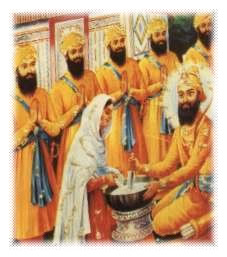
The Guru, after dressing the five in handsome clothes, brought them from the assembly.
These five were then administered ‘Khande di Pahul’ (the double-edged Sword Amrit). They were then knighted as Singhs, as the Five beloved ones, the first members of the Order of the Khalsa.
The Guru then asked them to administer the Pahul to him in the same manner in which he had given the Pahul to them, and it was done so.
Guru Gobind Singh Ji (1 April 1621 – 19 December 1675) was the tenth guru of Sikhs. Guru Gobind Singh Ji was also a scholar, writer and a poet, well-versed in many languages: Sanskrit, Persian, Punjabi, Arabic, Awadhi and Braj Bhasha.
His father was Guru Teg Bahadur who was beheaded for refusing to convert to Islam. Guru Gobind Singh Ji was nine years old when he had to overtake the leadership. The tenth Guru is predominantly known for founding the Khalsa and instituting the five articles of the Sikh faith: kesh (hair), kacchera (a specific type of undergarment), kangha(comb), kada (iron bracelet) and kirpan (small sword).



